Inclusion student ideas for the art room
I have students who are developmentally delayed in my classroom. A few of my students are severely delayed and need a full time aid. It is hard keeping these students engaged with the activity I'm teaching the rest of the class. I want these students to attempt to make what we are making and then they can do the extra activities I have prepared for them. Many of these students are at the scribbling stage so they "fly" through the art project. Reverting to my years as an intervention specialist and ideas from other art teachers, I prepared a big bin with items in it just for them. Their aid knows to go to the bin and pull out the various art projects when they are finished with what we are making for the day. You can ask the occupational therapist at your building for ideas.

You need adaptive scissors and brushes. Ask your OT if she can spare some extra ones to keep in the art room.
This is called an Adapt-a-cut and Adapt-a-Hold. These are great tools for students who have limited fine motor skills. The Adapt-a-Hold holds the paper in place and the Adapt-a-Cut allows students to push it through the paper they need cut safely.
I have a sign to place in front of the student that makes noises while I'm giving instructions. Our intervention specialist made this for me from the Boardmaker program.
I also had our intervention specialist make this for my class to help my students that need a visual schedule of their art time with me. This is also made from the Boardmaker program.
This is a visual step by step of how to paint for those students who need visual reminders.

I asked our speech therapist if she would write a social story for one of my autistic students who needs reminders on the appropriate behavior in art class. She also used the boardmaker program. This is just a few of the pages.
My speech therapist is awesome!
I tape my inclusion students' paper down to keep it stable while they are working. I also have play dough for them to play with when they are finished.
I have big crayons, broken crayons and crayons I melted into a muffin tin for students to color with. The muffin shape crayons work great with students who are still in the fisted grasp stage.


I have taken scrap construction paper and drew various lines on them for students to practice cutting.
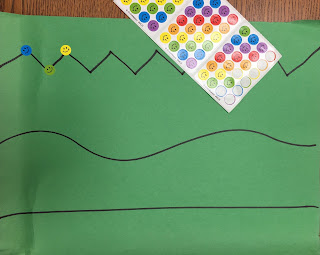
Have students apply stickers and stick them to various lines. Students can also design their own stickers as well.
When the typically developing students use watercolor palettes I have my students that have severe fine motor delays use a tempera cake palette for better control.
I have a sponge soaked in paint with sponges that have little handles on them for my students to use if the painting lesson I'm currently teaching isn't appropriate for them.
Students can use these textured brushes as well.
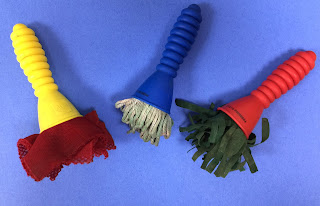
Natural sponges are fun and they are big enough for them to grasp easily.
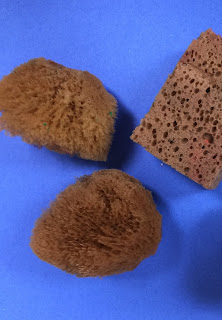
Combs, toothbrushes...anything you can think of to give them variations for painting techniques.
Paint combs make great textures in the paint but can be hard for some students with disabilities to grasp. You can do hand over hand with these.
Wrapping bubble wrap around the students' hands makes a fun painting technique.
Rolling cars in paint is another option.
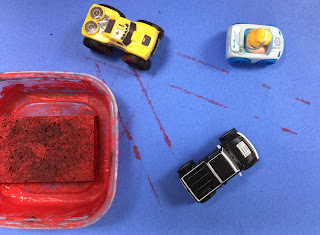
Baby wipes are in the bin for easy clean for the aids.
Art board books for quiet time.
Beads to string on yarn and pipe cleaners (watch mouths!).
Links to connect.

Various stamps and a giant ink pad.
One of the classroom teachers was getting rid of these so I grabbed them for the art bin.
A doodle sketch, small dry erase board and marker for free drawing. The paraprofessional can draw various lines or basic shapes for students to trace or copy.

And paper!
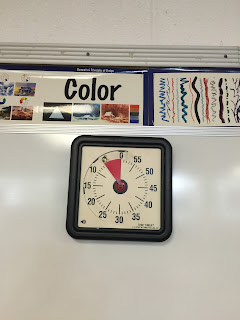
A visual timer also helps students keep track of how much time is left until class is over.
Ask the occupational therapist what she is working on with the students for ideas.


































































